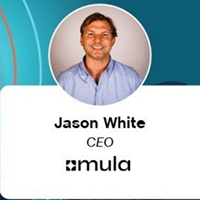LinkedIn advertising and posts catering to customers’ inner geek have boosted social traffic for optical component manufacturer Edmund Optics.
About 30% of Edmund’s social traffic was coming from Facebook. Once the LinkedIn ads began, they became responsible for 41% of traffic.
“Our customers are passionate, and targeting optical engineer groups on LinkedIn has worked for us,” says Kirsten Bjork-Jones, director of global marketing communications for Edmund.
While the brand operates in a very specific niche industry, its social network audience is very  passionate, says Edmund Optics marketing analyst Geoffrey Forman for Edmund, who spoke with Bjork-Jones at the recent MeritDirect Co-Op 2014.
passionate, says Edmund Optics marketing analyst Geoffrey Forman for Edmund, who spoke with Bjork-Jones at the recent MeritDirect Co-Op 2014.
Social media drives about 10% of Edmund Optics’ site traffic, versus just three percent coming from the top three optics industry websites. Sponsored social content is also yielding good results for the company.
Customer Interaction
The Edmund team also leverages social media to help with customer service and tech support. While social isn’t the ideal forum to address these kinds of issues, customers often reach out to brands with concerns in these arenas, so its up to marketers to respond in an appropriate and timely manner.
“This is a medium where people expect instant results. If you don’t respond quickly, customers could think you’re not responsive to their needs,” Bjork-Jones says.
If a customer reaches out with tech support or customer service concerns via social, the Edmunds team responds either directly or through their private inbox to steers them toward more appropriate channels where their issues can be properly addressed.
Edmund Optics also uses social media to help create its online image.
“When you post on social media, that is your brand personality. We take the geeky approach,” Forman says. To appeal the inner nerd in its followers, the Edmunds team often references sci-fi and space themes (which ties in nicely to the optics world), and uses the hashtag #geekyfriday to share fun, geeky items and build relationships with its audience.
“We post these so people understand that we have a pattern and they know what to expect from us,” Forman says.
The team also creates a wacky holiday video at the end of each year and promotes it via social media—last year’s featured a zombie infestation theme, and was a big hit among Edmunds’ audience.
“We received a 20% open rate and a five percent click-though rate for the video, which was shared around social media. For us, 5,000 views in a small niche industry is a big deal,” Bjork-Jones says.
Quick Tips
The Edmunds Optics team is all-in on social media, and says that’s been a big part of its social success. Forman says the marketing team is always on top of its social networks and keeping active is the best way to let customers know you’re there and ready to engage with them.
Creating measurable goals for social media can also help measure success. Posting information and links to technical content such as white papers is one way to see if your social audience is picking up the right message.
Finding the right channel to broadcast on is another challenge. While focusing Pinterest and Twitter may be right for one brand and its audience, Facebook and LinkedIn may be a better choice for others. Tune in to your customers and audience to find out which social networks are most popular with them and then dig in.
Finally, remember that messages on social sites are public, so developing a social policy and sticking to it is the key to avoiding embarrassing public online missteps.
“Once it’s up there, it stays online forever, so don’t do anything you’re going to regret. Develop a social policy and follow it, and clearly define who’s responsible for the posts,” Bjork-Jones says. Sounds like a recipe for success.
 Network
Network

